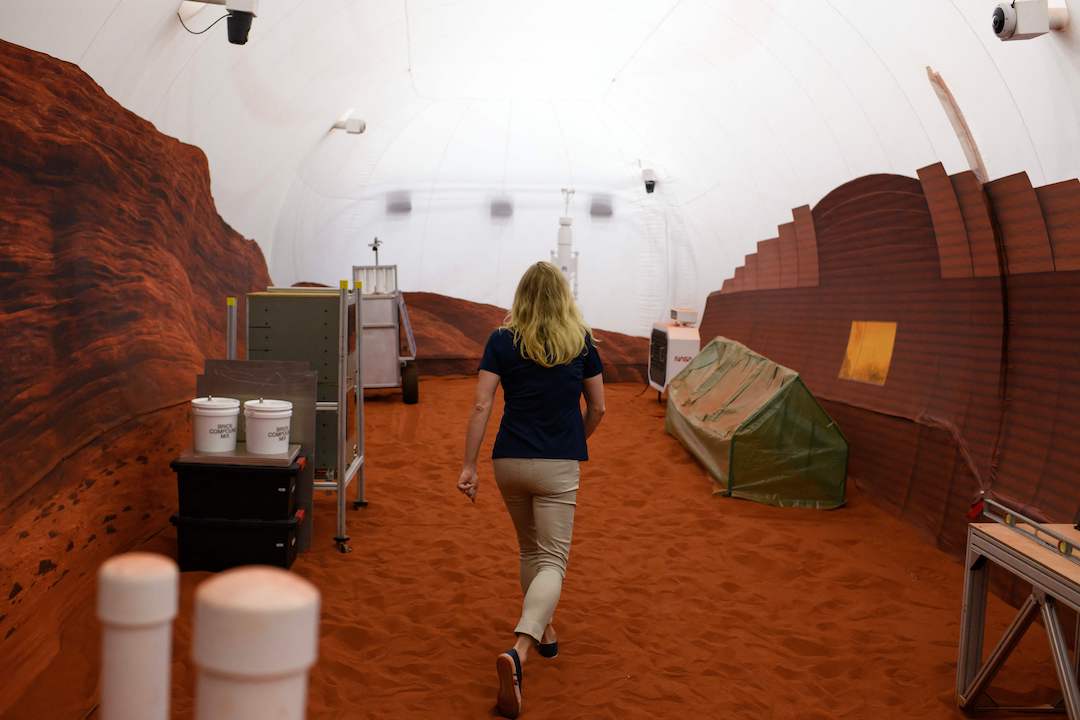Create a free profile to get unlimited access to exclusive videos, sweepstakes, and more!
How Much Does It Pay To Live in a Mars Simulator For a Year?
Pretending to be on Mars for science does come with a salary.

So, let's say you agree to give up life as you know it for a full year, leaving family and friends behind and traveling to Houston to climb inside a simulated Mars environment for the sake of future NASA space exploration? How much would you be hoping to get paid for such a task?
According to the Houston Chronicle, the four volunteers who entered NASA's Mars CHAPEA (Crew Health and Performance Exploration Analog) Mars simulator mission on Sunday aren't going to get rich off the gig, but they're not without compensation either. The paper reports that NASA is paying the CHAPEA crew about $10 per every waking hour they spend on the mission, amounting to 16 hours a day, every day, for a full year. The paycheck? Roughly $60,000.
Where is NASA's Mars Simulator Located?
The CHAPEA simulator, which features an "outdoor" environment meant to simulate the Martian surface as well as a fully equipped habitat for the volunteers, was constructed as NASA's Johnson Space Center in Houston, where the crew will live out the next year closely monitored by Houston Mission Control.
The CHAPEA crew -- composed of four volunteers all working in a STEM field of some kind -- entered the simulator after a brief ceremony and remarks on Sunday, which was broadcast life on NASA social channels. Now that they're inside, they will spend the next year working and living together in a 1,700 square feet, 3D-printed simulation of a Mars base, complete with all the potential problems a crew could encounter during an actual Mars mission.
The issues the crew might face over the next year could range from equipment failures to challenging environment conditions, but it all starts with one of the crucial challenges of conducting any future mission on the Red Planet: The long communication delays with Mission Control back home.
RELATED: You Can Now Navigate the Martian Surface
"When we go to Mars someday, there's going to be up to a 22-minute delay each way," Dr. Suzanne Bell, a Behavior Health and Performance Laboratory lead at Johnson Space Center, told Houston's ABC 13.
She continued, "So Mission Control won't even hear about a problem until 22 minutes after it's occurred. This requires the crew to work with unparalleled levels of autonomy, and they'll have to problem solve on their own," she said. They'll have to determine what they elevate back to Mission Control and wait 44 minutes for the response. And so that's exactly one of the things we're trying to replicate."
That issue, combined with simulated equipment failures, research missions, Martian farming, and simulated walks on the surface of Mars, will fill the days for the volunteers -- which include a US Navy microbiologist, an emergency medicine physician, a research scientist, and a structural engineer -- as they spend the coming 52 weeks cut off from the rest of the world in tight quarters. It's interesting work if you can get it.
Hopefully, they fare a little better than the ill-fated crew of 400 Days, the wild sci-fi thriller now available from Universal Digital.


























